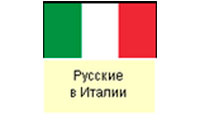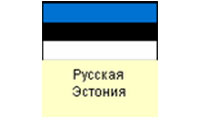Tatiana Litse (Lietz)
Tatiana Litse (German – Lietz; Latvian – Līce, Russian – Лицис, Лице; 9th of September/27th of August 1916, Petrograd, Russian Empire – 11th of March 2001, Zwickau, Federal Republic of Germany) – an artist.
Tatiana’s father – Eugene Litsis (Eižens Līcis) (1888-1962) served as a revenue inspector in Riga. In the beginning of the World War I he was conscripted, and received a position of an officer in the headquarters of the Chief of the supply service of front armies. His spouse – Vera Litse (Līce, born Zīlīte), and mother-in-law followed him to the capital of the Russian Empire. Tatiana, who was the only child in the family, was born in Petrograd (now Saint-Petersburg).
In 1918 the family returned to their native city of Riga, where their ancestors had lived for more than 200 years. During the interwar period, Eugene Litsis served as the head of the 6th revenue district. Until 1941 the family resided in the house on Valdemara street 71.
In 1922, at the age of 6 Tatiana started learning to play the piano and mastering ballet moves. Exactly at that time, her uncle – Sergey Mikhailov, gave her a box of watercolours, and since then she became enthralled with drawing. In 1926 she was diagnosed with tuberculosis and was forced to give up her ballet classes. For some time her world was limited by their summer house in Priedaine (in the vicinity of Riga).
Due to the illness, Tatiana was not able to visit school, however, her mother homeschooled her, so the girl did not fall behind her peers. In 1933 she graduated with honours from the Riga Private Russian Gymnasium of Olimpiada Lishina. The same year she enrolled into the faculty of mathematics and natural sciences of the University of Latvia.
Also, in 1932-1934 she attended Konstantin Vysotsky’s studio of painting and drawing.
In 1933-1941 Tatiana studied mathematics at the University of Latvia (due to the complicated political situation and the family’s emigration from Latvia, she could not pass the final exams).
Additionally, she attended lectures on the history of art by professor Boris Vipper.
On the Easter of 1934 Tatiana Litse met an academician Nikolay Bogdanov-Belsky, a former member of the society of the Itinerants (Peredvizhniki).
Later, she followed his advise and in 1934-1938 had been studying the technique of oil painting by Jānis Tilbergs – a professor of the Art Academy of Latvia.
In the summer of 1935, with the help of Bogdanov-Belsky Tatiana Litse had been mastering her skills in the estate ”Zhogoti” (vicinity of Rezekne), which belonged to baron Nolde. In 1936-1937, during the summer holidays, she worked in Balinovo, Zhogoti (Latgale), as well as in Asari and Priedaine (Riga beach). At that time she already was a member of the Union of Independent Latvian Artists.
From the 20th of March till the 10th of April 1938 a personal exhibition of Tatiana Litse had been taking place in Riga, on Rainis boulevard 15. The same year she went on a study trip to Germany together with her parents – they visited Berlin, Munich and Dresden. In the summer of 1939 Tatiana had been drawing landscape-paintings in the estate of Balinovo.
Tatiana Litse was a member of Latvian Society of the Fine Arts (her membership card is an evidence of her membership).
In the March of 1940 Tatiana Litse drew a portrait of the rector of the University of Latvia professor Martinjsh Primanis, and in the April – a portrait of an architect and a patron of arts Kristaps Morbergs.
On the 7th of May 1941 Litsis family was among those, who left Latvia. Tatiana Litse (from then on she was known under the surname Lietz) became a member of the Universal German Society of Artists (Berlin) and was accepted into the Reich Chamber of Culture.
In the September of 1942, together with her father, she spent two weeks in Riga. In 1943 Tatiana Litse/Lietz visited Riga for the second time.
In the September of 1944 Reich Labour Service sent her to Posen/Poznań. In the January of 1945, due to the offensive of the Red Army, Tatiana Litse/Lietz fled to Berlin. Unfortunately, most of her works were lost in the flames of war.
In order to escape massive bombardments of Berlin, the family decided to move to Zwickau (a city in the land of Saxony), where resided an old friend of the family, dentist Eiland. Immediately after the arrival to the station Tatiana noticed, how beautiful was the view on the tower of the Dome cathedral. It was similar to the church of Saint Peter in Riga and this first powerful impression affected the decision to stay in Zwickau for good.
In 1945-1950 Tatiana Litse/Lietz taught Russian language in Zwickau Academy of Commerce. On the 2nd of December 1945 she participated in the first post-war exhibition in the city museum. In 1950 she taught Russian language and history of arts in Zwickau Gymnasium. In 1952 she was accepted into the Society of Fine Art Craftsmen of the German Democratic Republic (GDR). In 1953 she became a docent of the School of Painting and Drawing in Zwickau.
In 1978 Tatiana Litse/Lietz retired. Since that time she taught drawing only to individual learners, as well as conducted private classes of Russian language.
At last she could fully dedicate herself to drawing. In 1979 the first exhibition of her works took place in the Intellectual Club of Zwickau. Another exhibition of her works took place after seven years in the city museum of Zwickau. The event was dedicated to her 70th birthday. In 1991 she became an honorary member of the Society of Arts in Zwickau. Next year another exhibition of her works took place – that time it was in the city art gallery of Zwickau “Peter Breuer”. In honor of her 80th birthday, an extensive retrospective exhibition of her works took place in the city museum of Zwickau. Also, a substantial catalogue of her works, and a catalogue of her autobiographical sketches were published.
In 1998 Tatiana Litse/Lietz was granted with the title of an honorary citizen of Zwickau.
Tatiana Litse/Lietz was a member of the Society of Fine Arts of GDR. Since 1950 she participated in the work of the society of German-Soviet friendship, since 1953 she was a member of the Union of Women of GDR as well as of other organizations.
Tatiana Litse/Lietz is a recipient of many awards: the Pestalozzi Medal in bronze and silver, the Medal for Distinguished Achievements, Award for the Distinguished Social Activities in the Field of Art etc.
In the spring of 2000 Tatiana Litse/Lietz drew a number of still lifes with flowers. However, the same year her health condition considerably worsened.
Tatiana Litse/Lietz passed away on the 11th of March 2001 at the age of 84.
In the funeral speeches dedicated to Tatiana Litse/Lietz, her life was compared to a burning candle which, alas, has gone out. In the farewell speeches, a special accent was put on her big and warm heart, which brought warmth to other people. A human being was in the centre of her painterly work: she drew portraits of many well-known personalities. She liked to draw nature and landscapes; paintings with lilac were especially characteristic of her art. Art experts, who examined the works of Tatiana Lice/Lietz, as well as admirers of her oeuvre, see sorrow and sufferings, exhilaration and hope, also shades of sadness, as well as feel emotions and receive inspiration from her paintings.
On the 18th of August 2001 in the museum of Schönfels castle (near Zwickau) an exhibition of her final works was opened. The exhibition was planned for her 85th birthday.
The text was composed on the basis of a book by Christian Ziegel
“Bilder Welten. Tatjana Lietz” (Chemnitzer Verlag, 2002)
Tatiana Lietz. Self-portrait.























